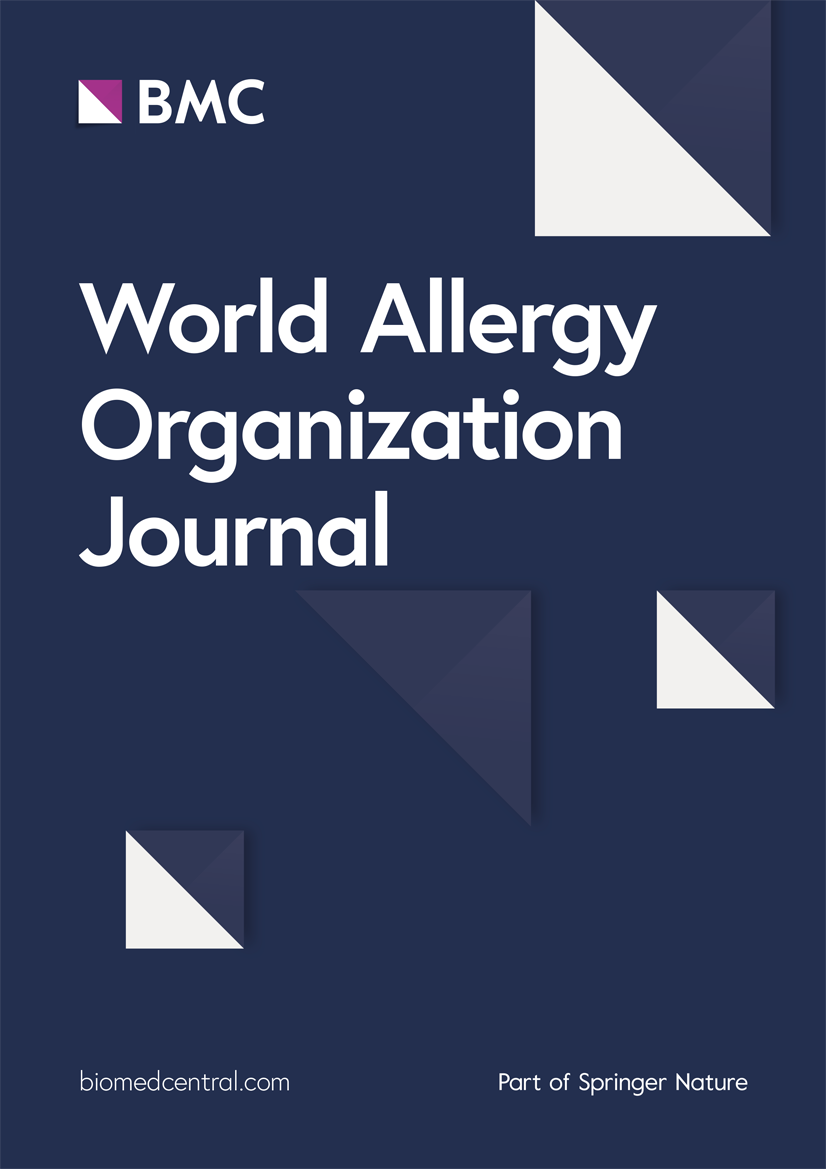Real-world treatment patterns and burden-of-disease of sub-optimally controlled hereditary angioedema
IF 4.3
2区 医学
Q2 ALLERGY
引用次数: 0
Abstract
Background
Hereditary angioedema (HAE) is a rare disease characterized by unpredictable, recurrent subcutaneous or submucosal swelling that negatively impacts patients’ health-related quality of life (HRQoL). Despite treatment goals aimed at achieving complete control of the disease and normalizing patients' lives, the disease remains poorly controlled for some patients.
Objectives
To describe the demographic, clinical and treatment characteristics, as well as the HRQoL impairment of patients with sub-optimally controlled HAE type I/II per treating physician's judgment, focusing on understanding the factors influencing the burden of illness.
Methods
A chart review was conducted at 32 HAE care centers across 18 European countries, Canada, and Israel between April 2022 and January 2023 in 214 patients aged ≥12 years with HAE type I/II sub-optimally controlled with on-demand treatment (ODT) and/or long-term prophylaxis (LTP). Patients receiving lanadelumab were excluded, as it was not yet widely available during the eligibility period. A cross-sectional survey at patient enrollment included the Angioedema Quality of Life (AE-QoL) and EQ-5D-5L questionnaires to assess the impact of HAE on HRQoL.
Results
Patients with uncontrolled HAE had a mean (standard deviation [SD]) of 9.9 (13) attacks per year, with a mean (SD) duration of 1.9 (1) days per attack. During the one-year observation period, 50.5% of patients were on ODT only, 36.0% used LTP and ODT concurrently, 6.5% used LTP without ODT, and 7.0% were untreated. Attenuated androgens (AA; stanozolol and danazol) in LTP were used by 24.7% of patients, while tranexamic acid (TA) and C1-esterase inhibitor (C1–INH) replacement products were used for LTP by 9.8% and 6.5%, respectively. The mean (SD) AE-QoL total score was 44.4 (24.0), indicating a moderate level of impairment, with women experiencing worse HRQoL (total score of 50.9 [SD 24] vs 37.3 [SD 23] in men) [where the minimal clinically important difference is 6 points] [1]. HRQoL worsened with increasing attack rates, from 41.4 (SD 24.0) among patients with one to 5 attacks/year, still indicating moderate impairment in HRQoL, to 73.0 (SD 27.0) for patients with >40 attacks/year.
Conclusions
Suboptimal disease control in HAE was associated with the use of ODT only, as well as LTP mainly with AA/TA. It imposes a substantial burden on patients’ HRQoL, more particularly, but not exclusively, for those with frequent attacks and for women. The results suggest a need for improved HAE management.
ClinicalTrial.gov study identifier NCT04957641.
现实世界的治疗模式和疾病负担的次优控制遗传性血管性水肿
背景:遗传性血管性水肿(HAE)是一种罕见的疾病,其特征是不可预测的、反复发生的皮下或粘膜下肿胀,对患者的健康相关生活质量(HRQoL)产生负面影响。尽管治疗目标旨在完全控制疾病并使患者的生活正常化,但对一些患者来说,这种疾病仍然控制得很差。目的描述治疗医师判断的I/II型次优控制HAE患者的人口学、临床和治疗特征,以及HRQoL损害,重点了解影响疾病负担的因素。方法在2022年4月至2023年1月期间,在18个欧洲国家、加拿大和以色列的32个HAE护理中心对214名年龄≥12岁的I/II型HAE患者进行了图表回顾,这些患者采用按需治疗(ODT)和/或长期预防(LTP)进行了次优控制。接受lanadelumab治疗的患者被排除在外,因为在适格期lanadelumab尚未广泛使用。在患者入组时进行横断面调查,包括血管水肿生活质量(AE-QoL)和EQ-5D-5L问卷,以评估HAE对HRQoL的影响。结果HAE未控制患者的平均(标准差[SD])为每年9.9(13)次发作,每次发作的平均(SD)持续时间为1.9(1)天。在1年的观察期内,50.5%的患者仅接受ODT治疗,36.0%的患者同时使用LTP和ODT治疗,6.5%的患者使用LTP而不使用ODT治疗,7.0%的患者未接受治疗。LTP中使用减毒雄激素(AA; stanozolol和danazol)的患者占24.7%,而氨甲环酸(TA)和c1 -酯酶抑制剂(C1-INH)替代产品的患者分别占9.8%和6.5%。AE-QoL平均(SD)总分为44.4分(24.0分),表明中度损害,女性HRQoL较差(总分50.9 [SD 24] vs 37.3 [SD 23])[其中最小临床重要差异为6分][1]。HRQoL随着发作率的增加而恶化,从1 - 5次/年患者的41.4 (SD = 24.0),仍然表明HRQoL中度受损,到40次/年患者的73.0 (SD = 27.0)。结论HAE患者的疾病控制不佳与单纯使用ODT和主要使用AA/TA的LTP有关。它给患者的HRQoL带来了沉重的负担,尤其是那些频繁发作的患者和女性。研究结果提示需要改进HAE的管理。
本文章由计算机程序翻译,如有差异,请以英文原文为准。
求助全文
约1分钟内获得全文
求助全文
来源期刊

World Allergy Organization Journal
Immunology and Microbiology-Immunology
CiteScore
9.10
自引率
5.90%
发文量
91
审稿时长
9 weeks
期刊介绍:
The official pubication of the World Allergy Organization, the World Allergy Organization Journal (WAOjournal) publishes original mechanistic, translational, and clinical research on the topics of allergy, asthma, anaphylaxis, and clincial immunology, as well as reviews, guidelines, and position papers that contribute to the improvement of patient care. WAOjournal publishes research on the growth of allergy prevalence within the scope of single countries, country comparisons, and practical global issues and regulations, or threats to the allergy specialty. The Journal invites the submissions of all authors interested in publishing on current global problems in allergy, asthma, anaphylaxis, and immunology. Of particular interest are the immunological consequences of climate change and the subsequent systematic transformations in food habits and their consequences for the allergy/immunology discipline.
 求助内容:
求助内容: 应助结果提醒方式:
应助结果提醒方式:


